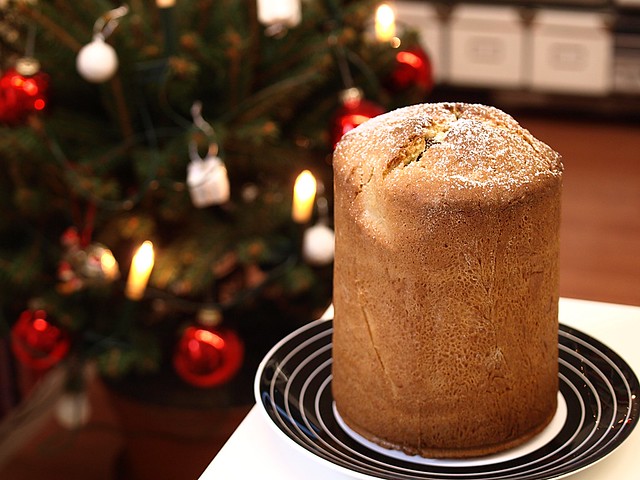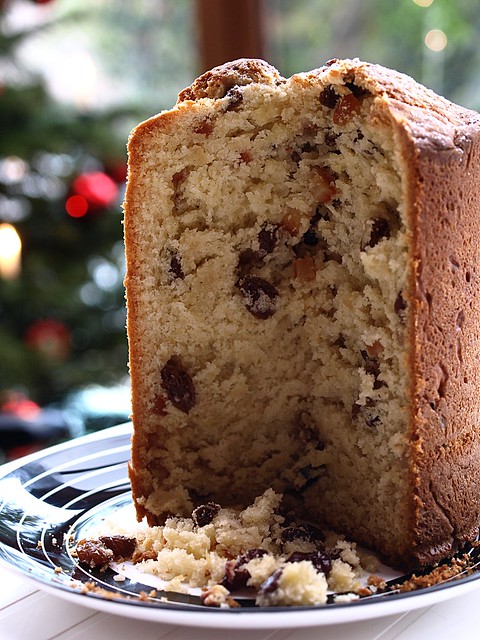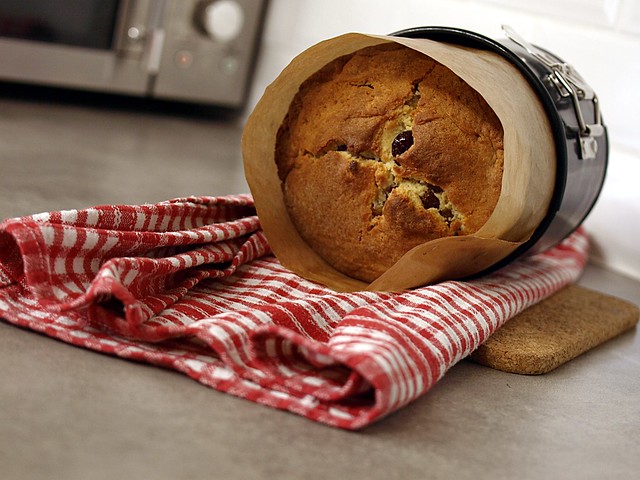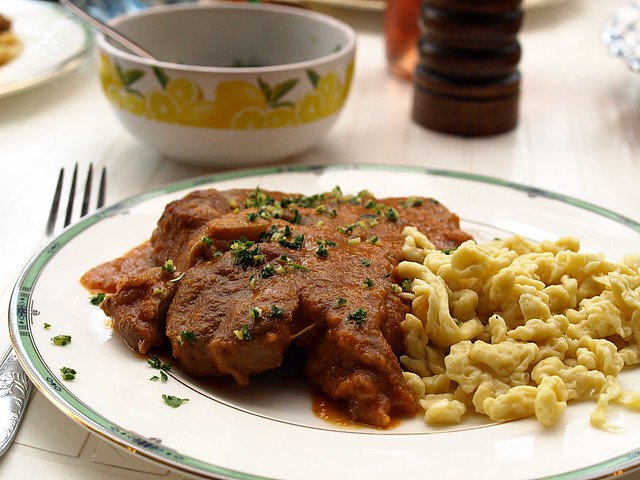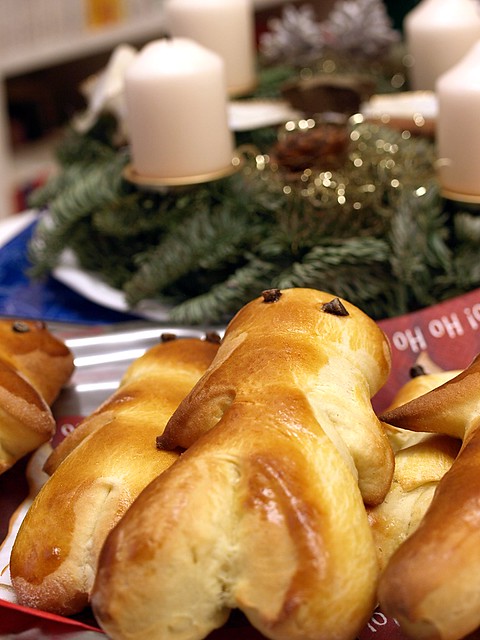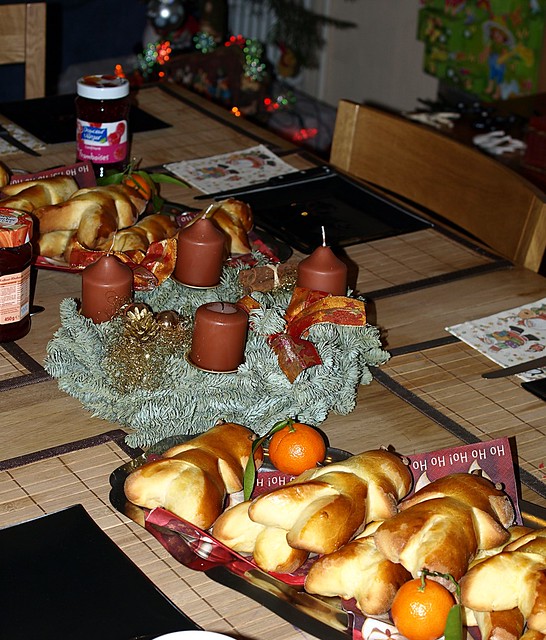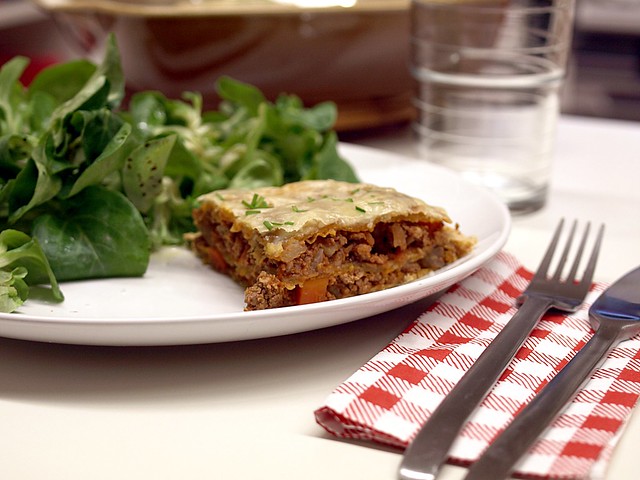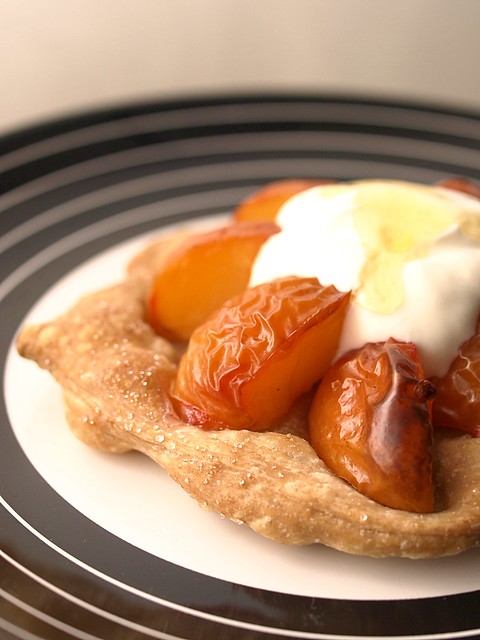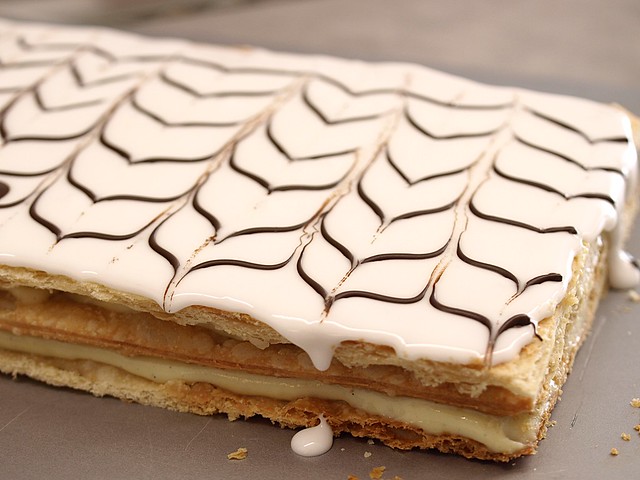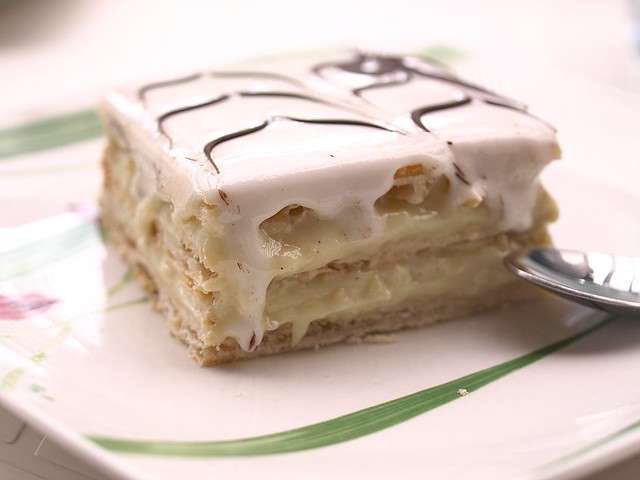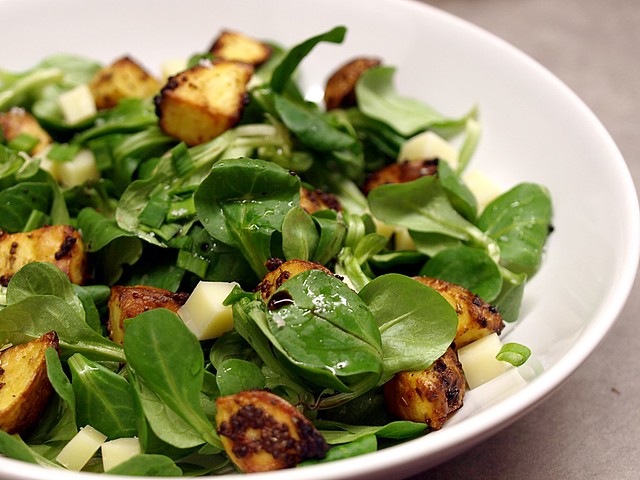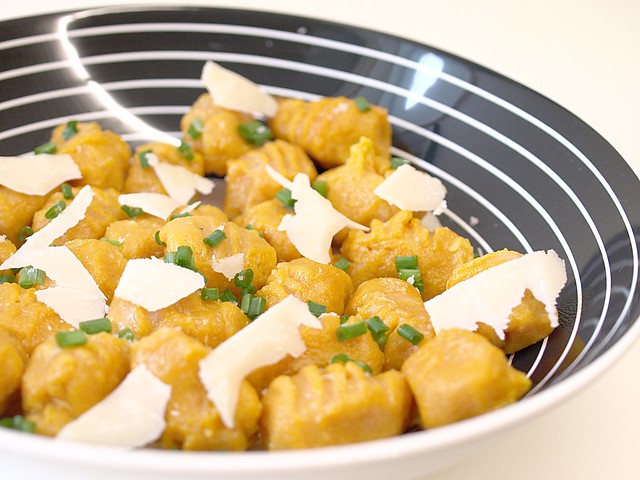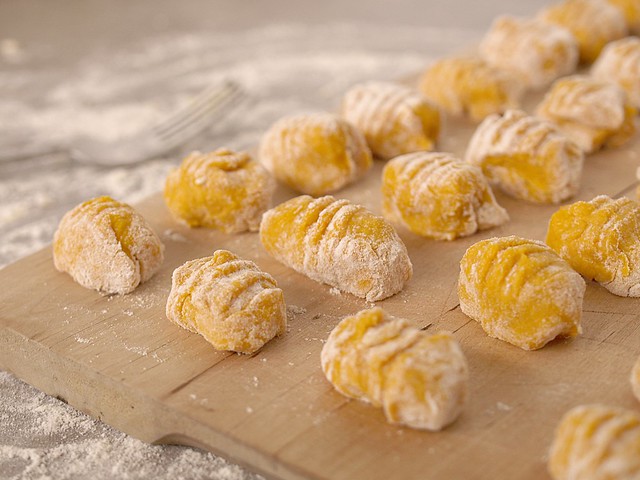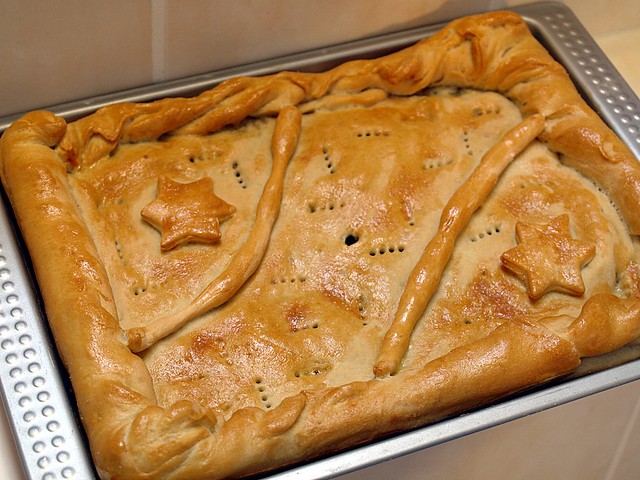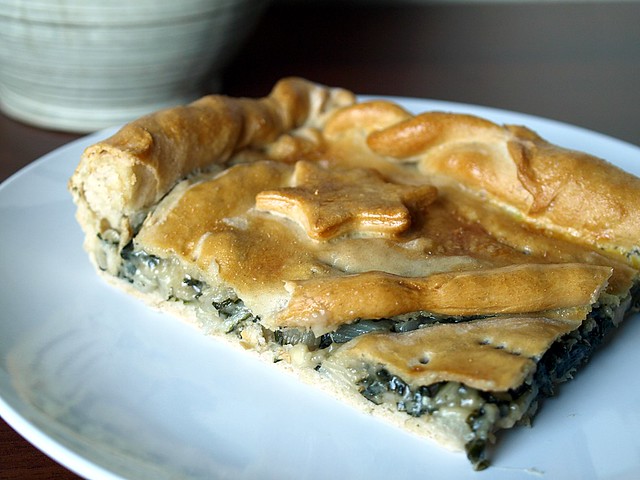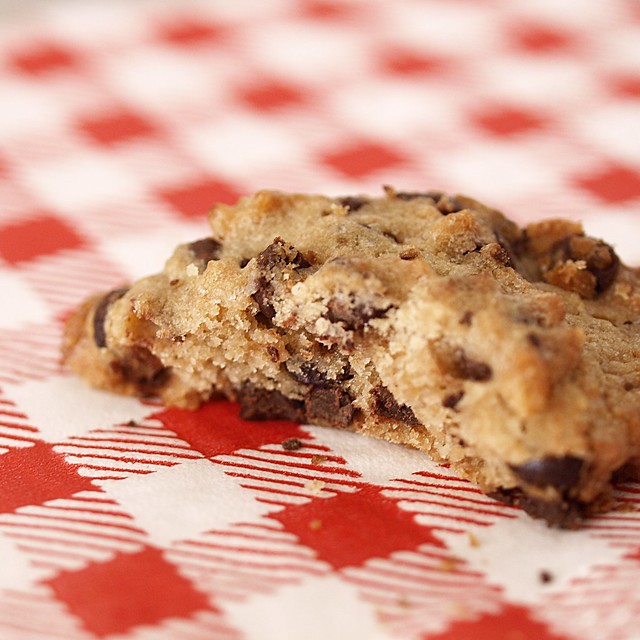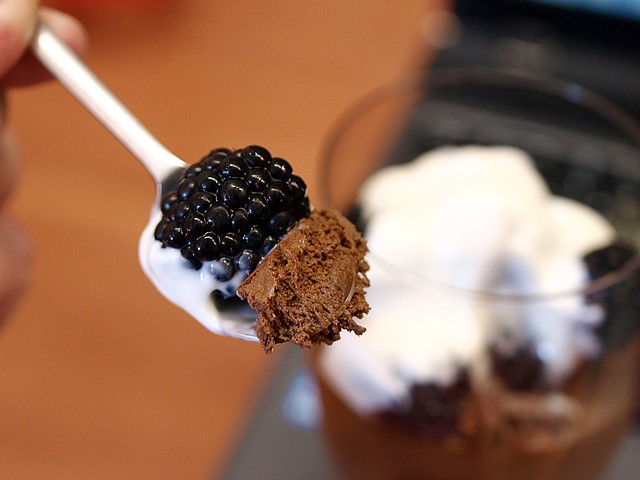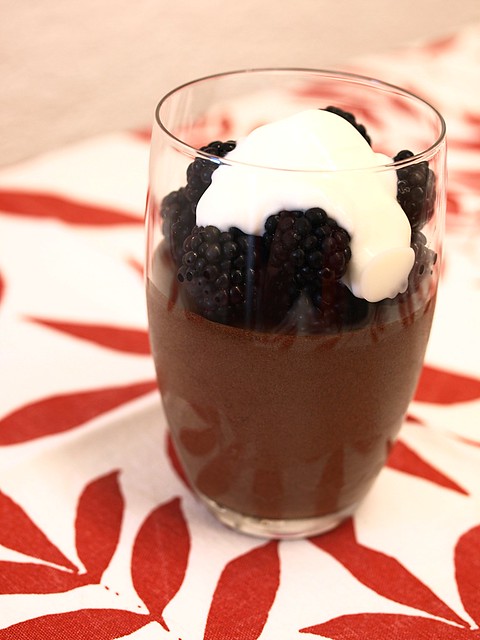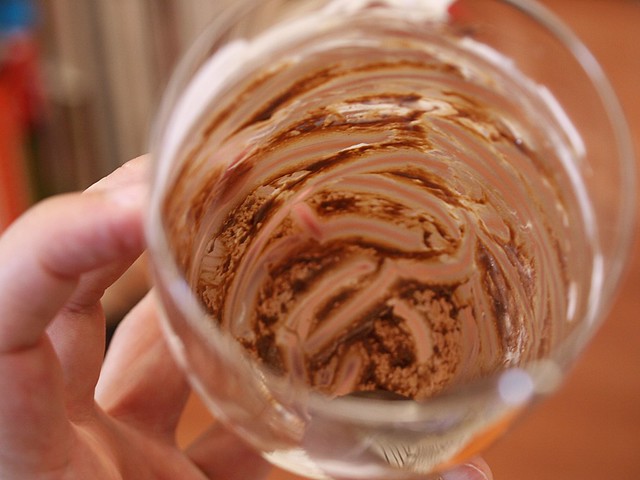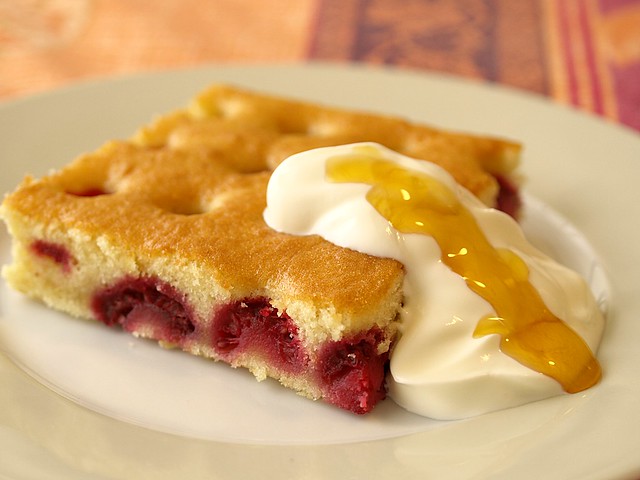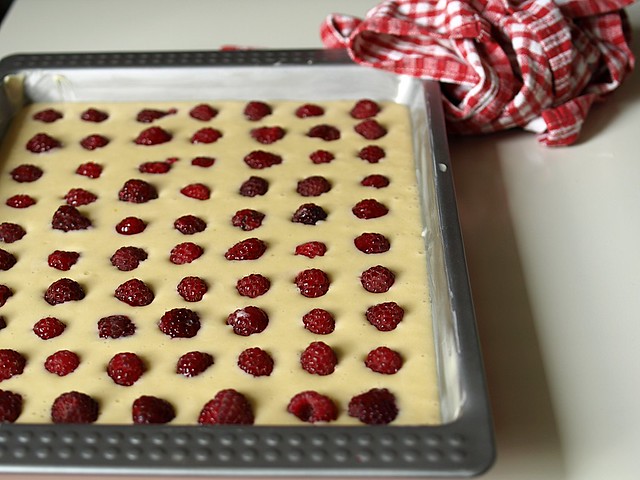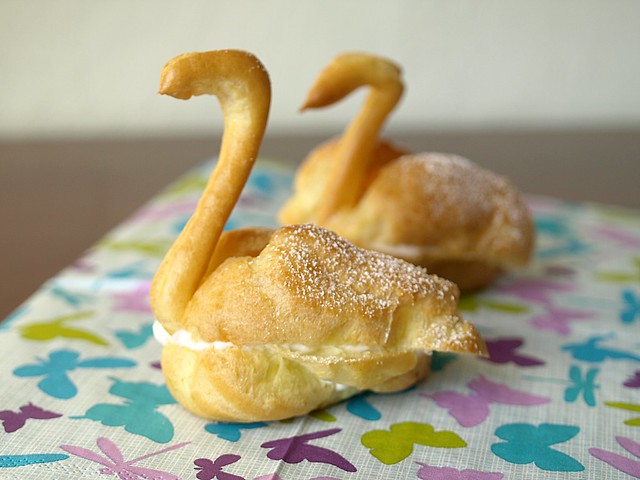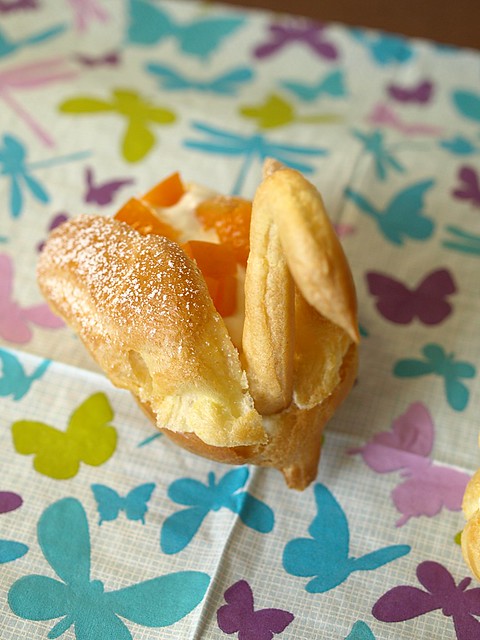The December 2012 Daring Bakers’ challenge was hosted by the talented Marcellina of Marcellina in Cucina. Marcellina challenged us to create our own custom Panettone, a traditional Italian holiday bread!
With a little bit of delay, I wish you all a merry christmas. I hope it's been a pleasant time for you, and that you got to share it with your beloved ones.
This month's daring baker challenge is bringing us a standard on italian tables at christmas: the panettone. I never had a chance to make one before, though it resembles to something we have here, called Kougelhopf that exists in both sweet and savory version.
I divided the following recipe in half, because I only have one panettone pan, and because my family is not too found of raisins. It is quite time consuming in the process, but I loved the result and it keeps really well for a few days.
My only few changes, were switching the orange and lemon extract for orange liquor, I've only used candied orange and added a few cranberries to the raisins.
If I don't have the chance until than, let me just all wish you a happy new year!
Panettone
makes 2
Ingredients
Sponge
7 gr active dry yeast
80 ml warm water
70 gr unbleached all purpose flour
First Dough
7 gr active dry yeast
45 ml warm water
2 large eggs, at room temp
175 gr unbleached all-purpose (plain) flour
55 gr sugar
115 gr unsalted butter, at room temp
Second dough
2 large eggs
3 large egg yolks
150 gr sugar
45 ml honey
15 ml vanilla extract
5 ml lemon essence/extract
5 ml orange essence/extract
6 gr salt
225 gr unsalted butter, at room temp
420 gr unbleached all-purpose (plain) flour; plus up to 100 gr for kneading
Filling and final dough
250 gr golden raisins or golden sultanas
75 gr candied citron
75 gr candied orange peel
Grated zest of 1 orange
Grated zest of 1 lemon
15-25 gr unbleached all-purpose (plain) flour
Directions:
Sponge
- Mix the yeast and water in a small bowl and allow to stand until creamy. That’s about 10 minutes or so
- Mix in the flour.
- Cover with plastic wrap and allow to double in size for about 20 to 30 minutes
By hand:
- Mix the yeast and water in a large bowl and allow to stand until creamy. Again, about 10 minutes or so
- Mix in the sponge and beat well with a wooden spoon
- Stir in the eggs, flour and sugar.
- Mix in the butter well
- This should only take about 5 – 6 minutes
- Cover with plastic wrap and allow double in size, about 1 – 1 ¼ hours
- In the mixer bowl, mix together the yeast and water and allow to stand until creamy. Again, about 10 minutes or so
- With the paddle attached mix in the sponge, eggs, flour, and sugar.
- Add in the butter and mix for 3 minutes until the dough is smooth and even.
- Cover with plastic wrap and allow double in size, about 1 – 1 ¼ hours
By Hand:
- Be sure to have your dough in a large bowl as above.
- With a wooden spoon mix in eggs, egg yolk, sugar, honey, vanilla, essences/extracts and salt.
- Mix in the butter.
- Then add the flour. Stir until smooth.
- At this stage the dough will seem a little too soft, like cookie dough.
- Turn it out and knead it on a well-floured surface until it sort of holds its shape. Don’t knead in too much flour but you may need as much as 2/3 cup (100 gm). Be careful the excess flour will affect the finished product.
- With the paddle mix in thoroughly the eggs, egg yolks, sugar, honey, vanilla, essences/extracts, and salt.
- Mix in the butter until smooth.
- Add the flour and slowly incorporate.
- At this stage the dough will seem a little too soft, like cookie dough.
- Replace the paddle with the dough hook and knead for about 2 minutes.
- Turn out the dough and knead it on a well-floured surface until it sort of holds its shape.
- Don’t knead in too much flour but you may need as much as 2/3 cup (100 gm). Be careful the excess flour will affect the finished product.
- Oil a large bowl lightly, plop in your dough and cover with plastic wrap
- Now we need to let it rise until it has tripled in size. There are two ways to go about this.
- Rise in a warm place for 2 – 4 hours
- Or find a cool spot (64°F -68°F) (18°C – 20°C) and rise overnight
- Or rise for 2 hours on your kitchen bench then slow the rise down and place in the refrigerator overnight. If you do this it will take some time to wake up the next morning but I preferred this method.
- oak the raisin/sultanas in water 30 minutes before the end of the first rise. Drain and pat dry with paper towels.
- Now take your dough and cut it in half. Remember we are making two panettoni.
- Combine all your filling ingredients and mix well
- Press out one portion of dough into an oval shape
- Sprinkle over one quarter of the filling and roll up the dough into a log
- Press out again into an oval shape and sprinkle over another quarter of the filling
- Roll into a log shape again.
- Repeat with the second portion of dough
- Shape each into a ball and slip into your prepared pans, panettone papers or homemade panettone papers.
- Cut an X into the top of each panettone and allow to double in size.
- Rising time will vary according to method of first rise. If it has been in the refrigerator it could take 4 hours or more. If it has been rising on the kitchen bench in a warm place it should be doubled in about 2 hours.
- When you think your dough has only about 30 minutes left to rise preheat your oven to moderately hot 400°F/200°C/gas mark 6 and adjust your oven racks
- Just before baking carefully (don’t deflate it!) cut the X into the dough again and place in a knob (a nut) of butter.
- Place your panettoni in the oven and bake for 10 minutes
- Reduce the heat to moderate 350°F/180°C/gas mark 4 and bake for another 10 minutes
- Reduce the heat again to moderate 325°F/160°C/gas mark 3 and bake for 30 minutes until the tops are well browned and a skewer inserted into the panettone comes out clean.
- Cooling your panettone is also important. If you have use papers (commercial or homemade) lie your panettoni on their side cushioned with rolled up towels. Turn gently as they cool. If you have used pans cool in the pans for 30 minutes then remove and cushion with towels as above.
- Panettone can also be cooled suspended. How to do this? Firstly you need to use papers (commercial or homemade), insert clean knitting needles into the bottom of the panettone in a X shape. Flip over and support the knitting needles on the edges of a large saucepan with the panettone suspended within the saucepan. Yep, a lot of trouble and I didn’t really find that much difference – maybe I took too long to insert the needles.

